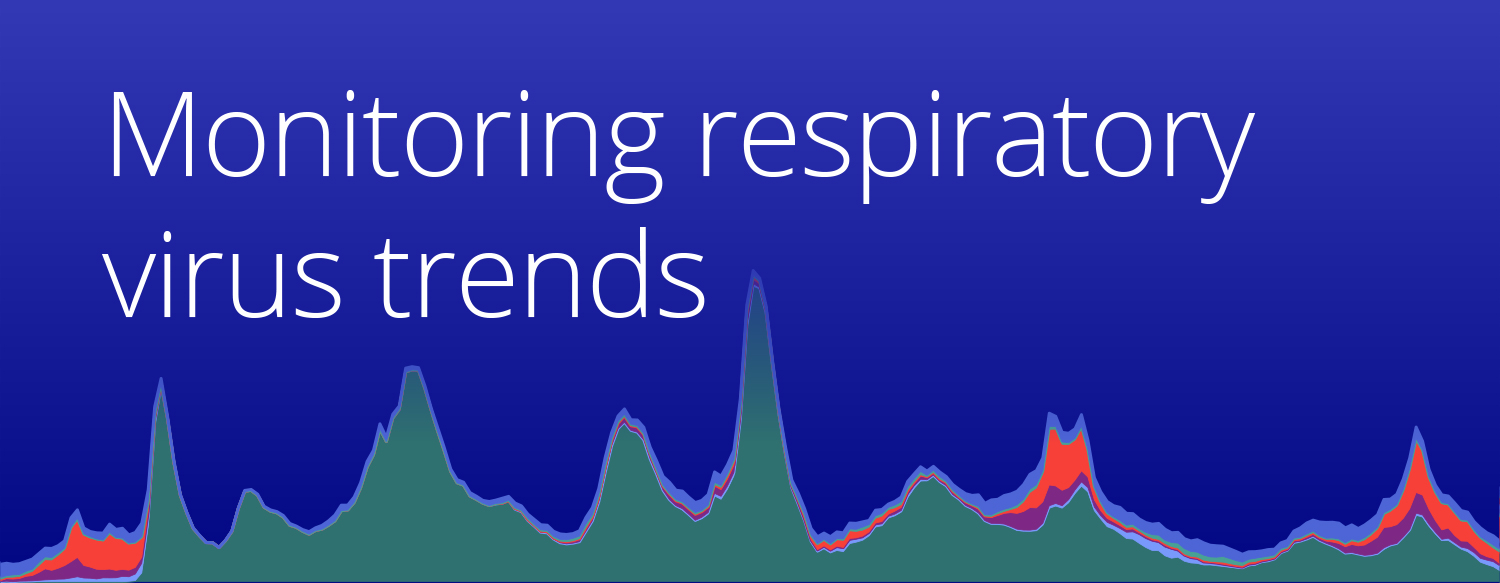- Overall, the rate of hospitalizations associated with respiratory viruses has decreased throughout March 2024 (-32.4%) compared to February 2024.
- For infants and children, we see a slight increase in respiratory virus-associated hospitalizations; however, rates are lower than seasonal highs. Rhinovirus-associated hospitalizations account for the largest percentage of hospitalizations (1.7% of all hospitalizations in the last week of March 2024).
- The population over 65 years of age saw a decrease in respiratory virus-associated hospitalizations (-37.0%), similar to the overall population.
Few sources regularly monitor hospitalizations associated with respiratory viruses. Truveta Research has created a monthly respiratory virus monitoring report to supplement the surveillance data provided by the CDC by describing weekly trends in the rate of hospitalizations overall and for each of the six most common respiratory viruses: COVID-19, influenza, human metapneumovirus (HMPV), parainfluenza virus, respiratory syncytial virus (RSV), and rhinovirus. This information can inform decisions about public health, clinical care, and public policy.
Because Truveta Data provides the most complete, timely, and clean de-identified EHR data, including full patient medical records, notes, and images, linked with claims, SDOH, and mortality data for more than 100 million patients across the US, we can show the latest trends in these respiratory virus-associated hospitalizations, including valuable insight into two at-risk populations: infants and children (age 0-4 years old) and older adults (age 65 and over).
This blog provides a snapshot of the key findings with data through March 2024 in the report specific to the overall population across all respiratory viruses, as well as for two high-risk populations: infants and children (age 0-4 years old) and older adults (age 65 and older). For the full analysis – inclusive of demographics, comorbidities, and overall trends in virus-associated hospitalizations across all age groups for each virus – see the complete monitoring report with data through March 2024 on MedRxiv.
Note that this will be the last monthly respiratory virus monitoring report until September 2024.
Key findings: Trends in respiratory virus-associated hospitalizations
Using a subset of real-world electronic health record (EHR) data from Truveta, a growing collective of health systems that provide more than 18% of all daily clinical care in the US, we identified 497,047 hospitalizations of 461,039 unique patients who tested positive for a respiratory virus between October 01, 2019 and March 31, 2024.
Overall population trends
Overall, the rate of hospitalizations associated with respiratory viruses decreased throughout March 2024 (32.4% decrease since end of February 2024).
Decreases in COVID- (-56.7%), influenza- (-28.4%), and RSV-associated hospitalizations (-57.6%) all contributed to this overall trend decrease. Associated hospitalizations for all other monitored respiratory viruses increased.
In the last week of March 2024, respiratory virus-associated hospitalizations accounted for 2.6% of all hospitalizations.
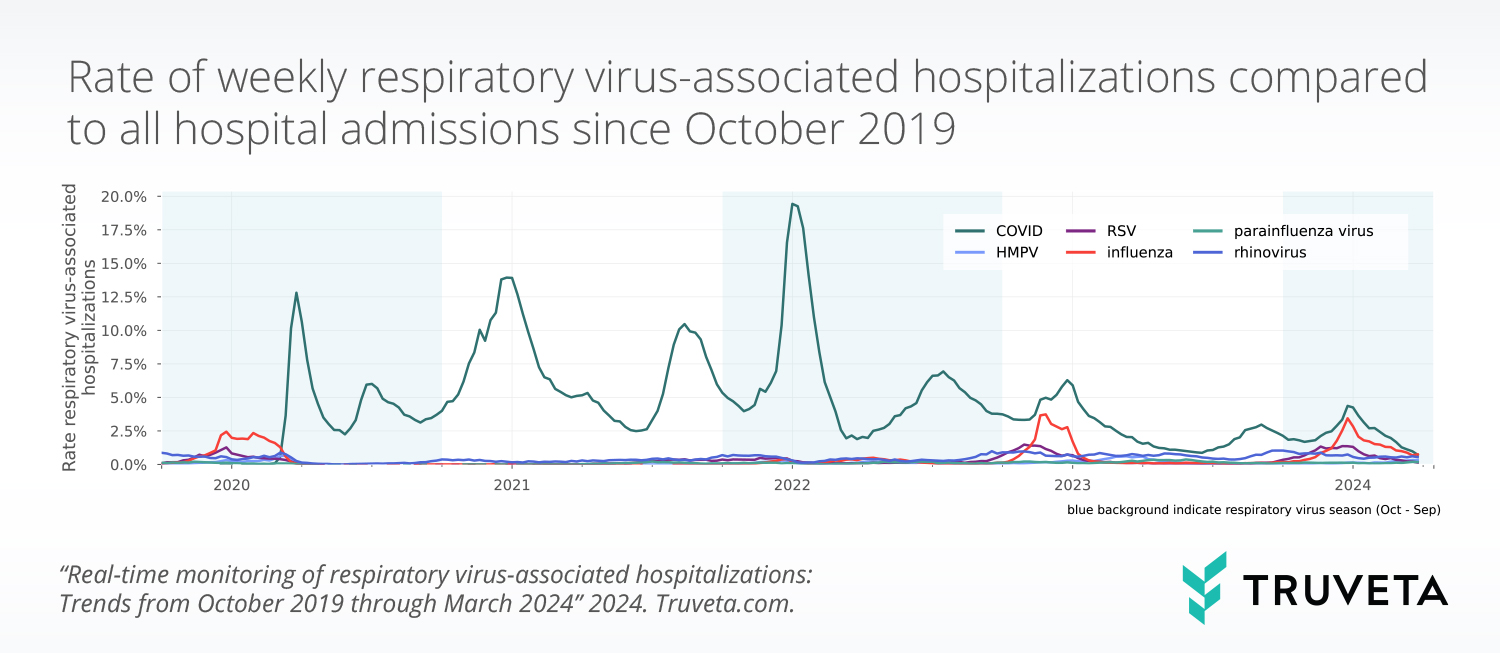
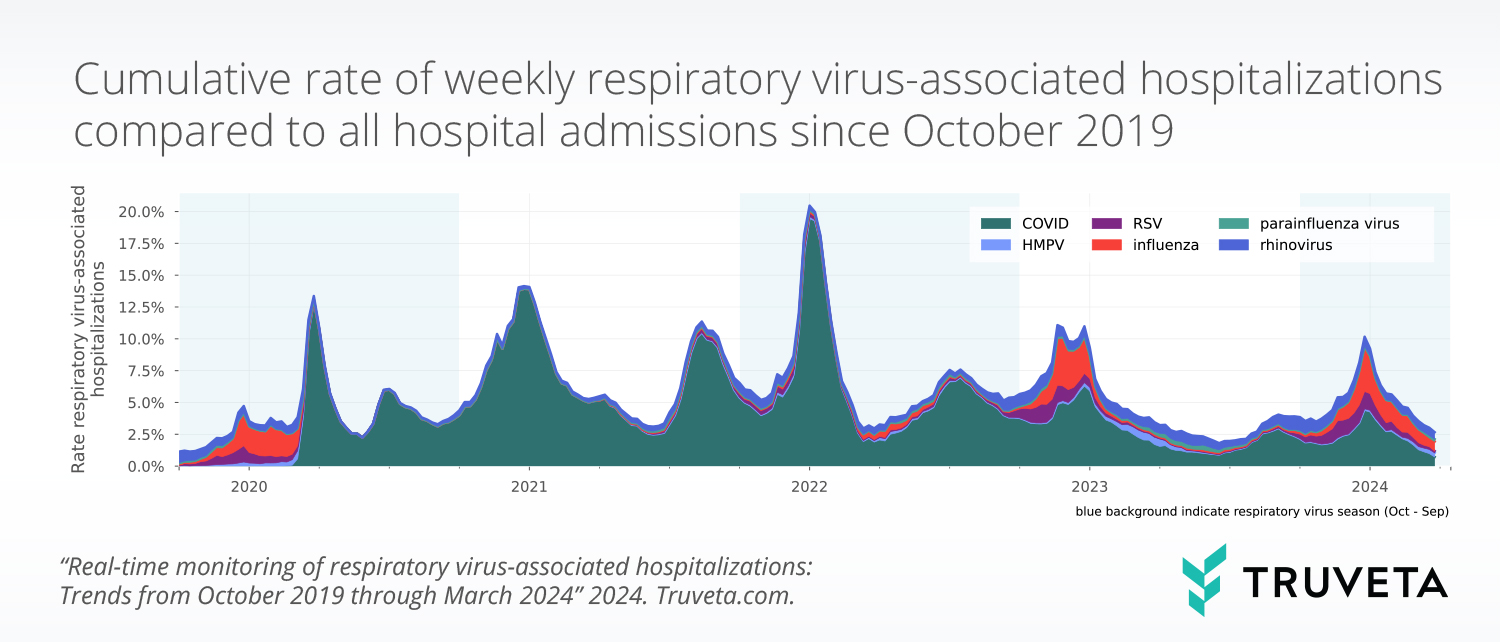

Infants and children (age 0-4)
For infants and children, the rate of respiratory viruses associated-hospitalization slightly increased overall and for HMPV- parainfluenza-, and rhinovirus-associated hospitalizations.
Rhinovirus-associated hospitalizations account for the largest percentage of hospitalizations (1.7% of all hospitalizations in the last week of March 2024).
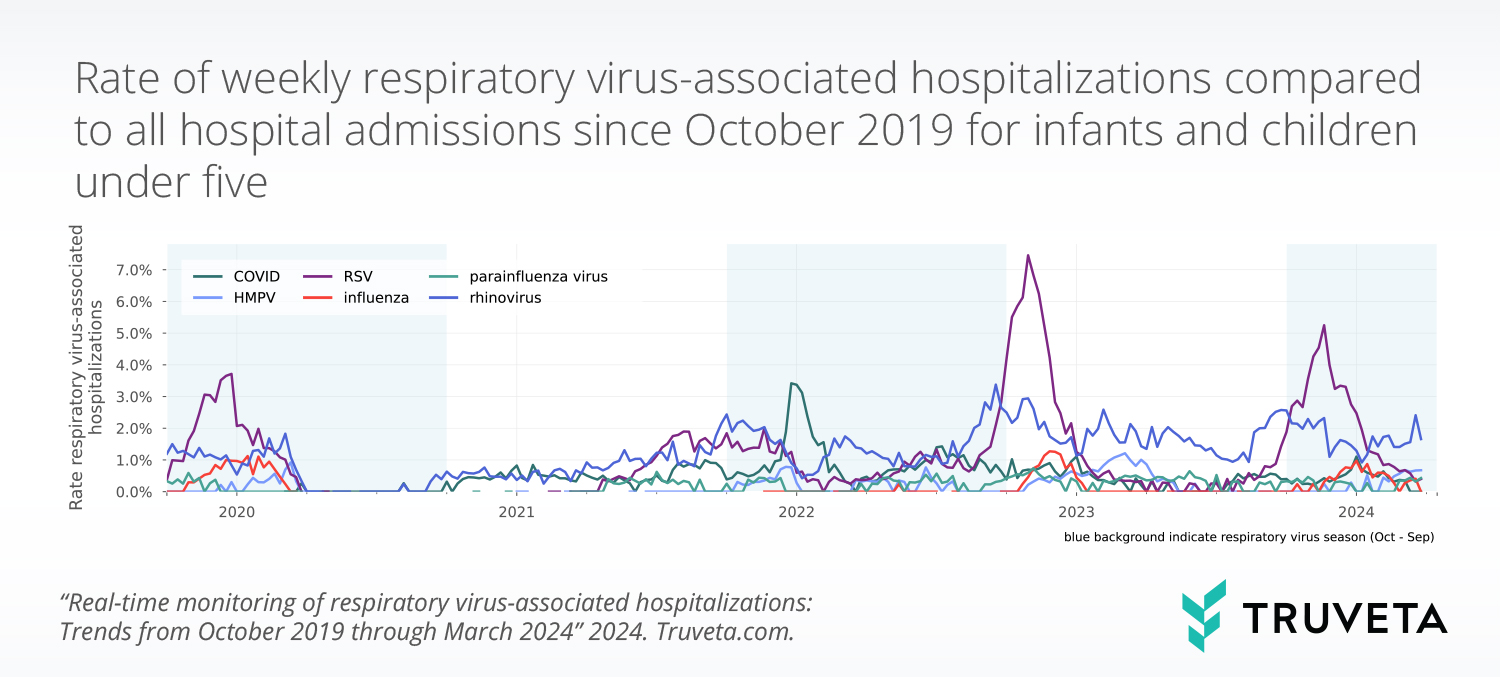

Older adults (age 65 and over)
The population over 65 years of age saw a decrease in respiratory virus-associated hospitalizations (-37.0%), similar to the overall population.
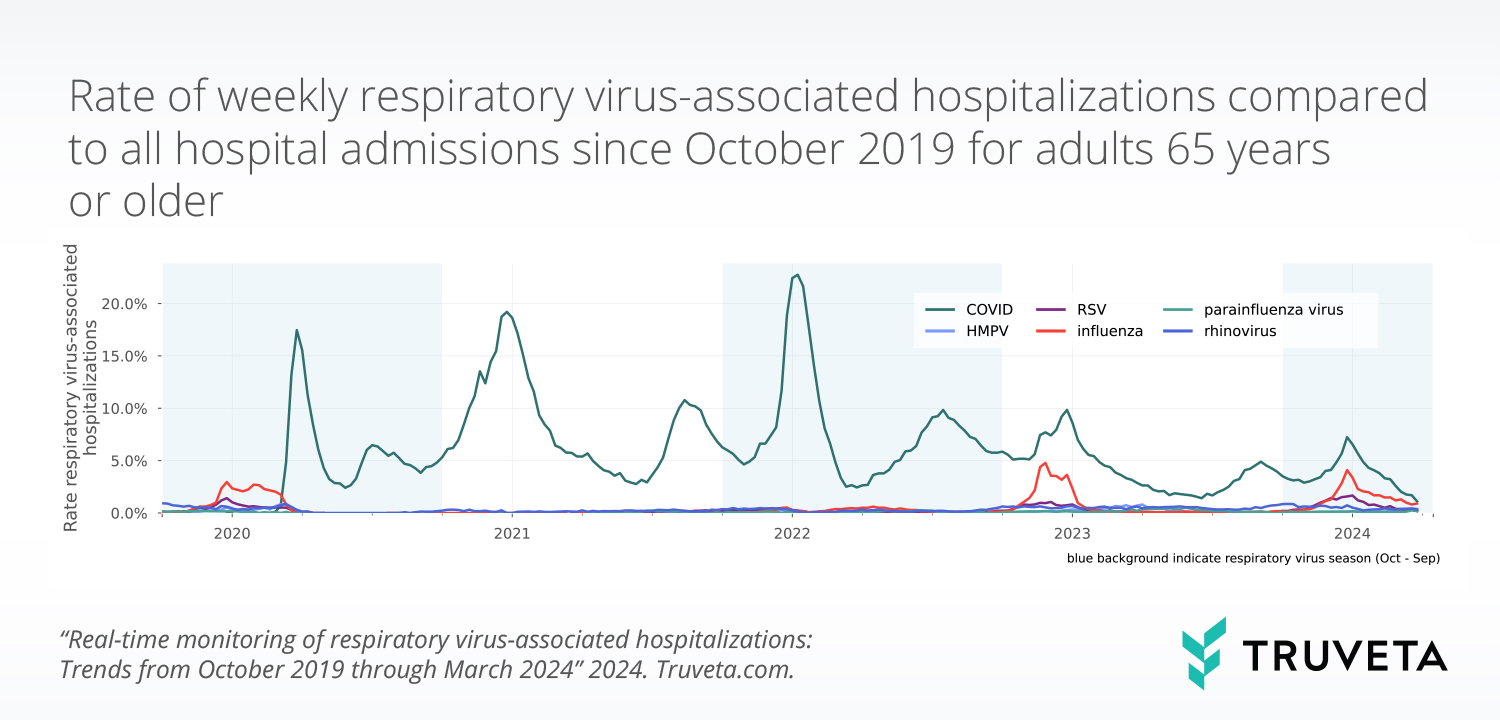

Discussion
It is important for public health experts and clinical providers to understand the trends in these infections to inform decisions about public health, clinical care, and public policy. Connecting population-level trends with granular clinical information available in Truveta Studio can be very useful to understand which populations are most impacted and may require additional support.
We will continue to monitor respiratory virus-associated hospitalization overall and for at-risk populations.

